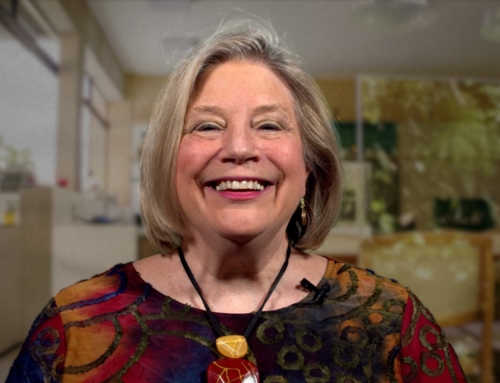What is Attachment and Why is It Important?
After working with thousands of clients and leading hundreds of group training sessions over the last 30 years, I strongly believe that our attachment styles play a critical role in how we interact and relate in our adult relationships—including intimate partnerships, work relationships and parenting/caregiving dynamics.
Our attachment styles influence how we form relationships, how we communicate, and how we express and respond to caring behaviors.
Unfortunately, attachment styles may also generate an assortment of unhealthy habits and behaviors that impede our ability to feel safe, connected, valued and joyful.
What is the Attachment System?
So what is the attachment system and how does it affect our current lives and relationships?
The attachment system is an innate behavioral system that influences (even dictates) how we bond with others. From infancy (or even in utero), we depend on our caregivers to respond to our connection cues.
If, for example, an infant cries out and a caregiver responds to her needs reliably and consistently, she will feel safe, cared for and wanted, and she will likely approach the world primed for secure attachment.
When we develop secure attachment in this way, we grow up believing the world is generally a safe place and that others can and will be there for us.
And the good news is, babies only need their cues met about 30% of the time for this secure attachment to register!
But, when our needs are not met, or we get inconsistent, confusing or even frightening responses from our caregivers, we may respond by adapting insecure styles—which our brains develop as a way of coping with less-than-ideal circumstances to help us survive.
This is very important to remember: most people who exhibit insecure attachment patterns did not grow up in a supportive, validating or consistent environment—and these adaptations only developed to keep you safe and alive. This can help you have self-compassion as you move through this work.
Attachment styles are adaptable and we are all designed for secure attachment. Through practice, and with the support of a therapist or other secure relationships, you can develop new skills to strengthen and recover the innate secure attachment you may not have gotten in childhood.
Why Learn About the Attachment Styles?
So why is this system so crucial in our adult lives and to our happiness?
You see, our attachment system is our original blueprint for how we perceive and relate to others and the world around us. And it colors many of our current interactions, often unconsciously.
When we have developed insecure adaptations, it can make it difficult to feel safe, to trust and to feel like we can get our physical or emotional needs met.
But the good news is, we are all wired for secure attachment. We are biologically predisposed to attach to caregivers (and later to loved ones and friends).
So we are not only capable but we are actually designed to cross the bridge back to secure attachment! And there are simple skills and practices we can learn to do just that.
For therapists, understanding attachment styles can be a radically effective tool to support clients with a range of personal and relationship challenges. Attachment also plays a major role in how we cope with and respond to trauma and other difficult circumstances, so an attachment lens can help us support clients through these experiences as well.
And to be truly effective as therapists, we need to do our own inner work, so we can better help our clients. If we can operate from a place of secure attachment, we can create a safe environment that establishes and enables a deeper therapeutic connection.
Trauma and Attachment
It may seem surprising that attachment and trauma would be interconnected, but once we understand more about the attachment system, it makes perfect sense.
One of my favorite (and simplest) definitions of trauma is “broken connections.” Each of the insecure attachment styles can lead to trauma, because they inhibit our ability to form and maintain connections, especially in the face of overwhelming circumstances or stress.
Trauma can overload the nervous system, making it more difficult to stay regulated. Emotional regulation is the ability to stay present and connected even in the face of hard feelings and experiences, as well as to cope with both the difficulties and pleasures of life.
Emotional regulation is a skill that is taught, learned and practiced. People with secure attachment learned this skill through interactions with their caregivers, wiring it into the brain as a natural response to stress or trauma.
In insecure attachment, however, children experience overwhelm and lack of safety, which creates a state of high alert (hyperarousal) or shutdown (hypoarousal) in the brain and nervous system. When they experience trauma or stress later in life, their brain typically defaults to this pattern of arousal, making emotional regulation more difficult.
Rather than move toward attachment or repair, the tendency is to activate the threat response system and react with “fight, flight, freeze or fawn.”
The good news is that secure attachment and emotional regulation can be learned and practiced. And, over time, our bodies and brains will begin to naturally choose more adaptive patterns and behaviors!
Now, let’s look at the four main attachment styles in more detail…
An Overview of Attachment Styles
Secure Attachment (Healthy Autonomy)
Caregiver patterns: Parents and caregivers are tuned-in to the child’s needs and respond when the child wants warmth, connection and physical contact. Children are confident that the parent will respond to their cries, so they feel safe and loved in their presence. Parents let the child explore, while making themselves available as a “home base” when the child needs to reconnect for security.
Secure attachment in adults is called “healthy autonomy.” Adults are able to connect with their partners, friends and coworkers. They are comfortable asking for and giving help when needed and can self- and co-regulate easily. They are protective of self, others and the relationship.
Most often, adults with secure attachment resolve conflict rather easily without taking things personally and refrain from blaming or shaming their partner. They are confident in relationships—and are able to give and receive affection, love and comfort from their partners when needed.
Secure attachment and trauma: Under stressful conditions, trauma or loss, securely attached individuals generally exhibit greater resilience and are able to maintain safety for themselves and others. They have practice with the skills of self- and co-regulation and are able to utilize these tools when faced with distress.
Avoidant Attachment (Dismissive)
Caregiver patterns: Caregivers were often tuned out, absent, neglectful or rejecting; this may have been due to their own attachment injury, work commitments, physical illness, mental illness or familial or cultural challenges. The child was left to their own devices too much of the time; their cues for connection often went ignored or unmet and they learned to try to meet their own needs and self-regulate.
Avoidant attachment in adults is called “dismissive.” Adults with this attachment adaptation are often overly independent. They may find it difficult to ask for help or support. Admitting that they have needs feels risky, since they learned their needs will likely go unmet.
They tend to isolate and feel more relaxed alone. It can be stressful to move toward connection and they may need time to transition. They can seem shut down and find it difficult to talk about or even feel emotions. They may instead, look to sex as a way to create connection. They can be overly critical in relationships and co-regulation is often difficult.
This does not mean they don’t want to connect to or love their friends, family and partners, but that they adapted early on to a lack of “other” by lowering or even shutting down their attachment responses. They need to reestablish a sense of safety in intimacy, which is something therapists can help facilitate.
Avoidant attachment and trauma: The avoidant attachment response to trauma and stress often defaults to the “flight” or “freeze” reactions of the threat response. People with this adaptation can have a tendency to leave (physically or emotionally), check out or shut down, and avoid expressing their needs or feelings or asking for help and connection from others. They tend to eschew dependency (or appearing dependent) and focus on appearing self-sufficient.
They may dissociate or compartmentalize as a way to maintain basic survival functions (freeze or shutdown response). They may go inward to hide, because being seen feels unsafe.
Finding the gift: People with avoidant attachment adaptations are very good at being objective and rational and bringing that perspective to situations. They can be very task-oriented and hardworking; they tend to be good at getting things done.
After some healing work, these people can learn to marry their logical capacity with their feelings, giving them a great capacity for emotional intelligence.
Ambivalent/Anxious Attachment (Preoccupied)
Caregiver patterns: Caregivers tended to be inconsistent, displaying on-again and off-again patterns of connection and responsiveness. This intermittent reward behavior led children to develop an obsessive focus on the “other.” Caregivers may have ignored the child until their signal cry became loud or extreme, or the child acted out or became ill.
Again, caregivers may have been dealing with their own attachment wounds, mental health issues or other family and cultural dynamics. In some cases, the child was actually expected to meet adults’ needs in “role reversal.”
Ambivalent attachment in adults is called “preoccupied.” Adults with this attachment adaptation can seem demanding in relationships due to a tendency to overfocus on the other and underfocus on the self. They may have difficulty with self-esteem and look to others to recognize their value. Self-regulation can be difficult.
Sometimes they end relationships too soon, believing they would eventually be abandoned anyway. Or, they may cling to unhealthy relationships out of fear of being alone.
Because they learned in childhood that having a loud or extreme signal cry could keep them safe, they may communicate through complaints or focus on what is missing in their relationships, and can even miss caring behaviors and attention. They need reassurance to build trust and to learn to receive the love that is there for them.
Ambivalent attachment and trauma: The ambivalent reaction to trauma typically defaults to a “fight” response, or alternatively, “fawn.” In either case, the behavior focuses on the “other.” The body and nervous system mobilize into action. There is a need to get loud or extreme, to draw attention, because being ignored or unseen feels unsafe.
People with ambivalent attachment tend to feel dependent on others to meet their needs and keep them safe, and may use reactive strategies to elicit a response.
Finding the gift: People with ambivalent attachment often have a very high degree of empathy and compassion; they tend to be very aware of and attuned to emotions and the needs of others.
When they begin to move back to secure attachment, they can learn to turn their compassion inward and connect with themselves first, so they can better connect with others. The gift of their hypersensitivity can heal into a very refined attunement, allowing them to empathetically understand themselves and others in an empowered way.
Disorganized Attachment (Disoriented or Unresolved Trauma)
Caregiver patterns: Disorganized attachment develops when caregivers (a child’s source of safety), become a source of fear or threat. It is often seen in people who were physically, verbally or sexually abused (or witnessed abuse)—or may have experienced other childhood traumas. Caregivers often experienced abuse or unresolved trauma themselves.
Because the child was unable to adapt to the caregivers’ behaviors (because they were unpredictable and frightening), the child developed disjointed behaviors in response. They may have sought connection, but simultaneously rejected closeness out of fear.
Disorganized attachment in adults is called “disoriented” or “unresolved trauma.” Adults with this adaptation often lack coherence in their relationships and behaviors. They likely feel torn between wanting to love, and experiencing real fear when connection occurs. They may vacillate, often unpredictably, between ambivalent and avoidant behaviors.
They often have difficulty with both self- and co-regulating and struggle to maintain close connections or to feel secure in intimate relationships. The need to develop a sense of safety is paramount.
Disorganized attachment and trauma: Disorganized attachment has a particularly complex relationship to trauma because the biological threat-response becomes entangled with the embodied instinct to connect.
For those with disorganized attachment, trauma or stress can be especially confusing, scary or unpredictable. They may trigger easily into fear or overwhelm, which may cause them either retreat or react volatilely.
Because disorganized attachment alternates between both ambivalent and avoidant behavior patterns, they feel like they are caught in a bind in which they both need to—and at the same time cannot rely on others—to help them regulate. Feeling stuck, they often dissociate or “check-out” from any situation they find uncomfortable or which could potentially cause pain.
People with disorganized attachment may avoid getting close to others because it feels unsafe to their bodies and nervous systems, however, to really begin to heal, they must instead learn how to trust safe connections. A trusted therapist can be a great asset in this process, as they can listen to their client and react in a very calm, predictable and supportive manner.
Disorganized attachment may present a challenging situation for therapists, and it may also be the style that needs and can improve with the support of therapy most of all.
Healing Attachment and Healing Trauma—There Is Hope
No matter your history, no matter where you or your client are today, healing is possible. Often, finding secure partners, friends or a trusted therapist can help those with attachment injury heal by example.
For therapists, creating a reliable, consistent and safe environment where clients can explore and practice new skills and behaviors without judgment or criticism is essential.
Be cognizant that stress, trauma, exhaustion and illness may re-trigger old patterns, but even small steps toward secure attachment remind us that there is always hope.
As we move back toward secure attachment, our natural capacity for connection comes to the forefront. We develop a healthy sense of self and can be more compassionate toward ourselves and others.
We are all designed for connection and intimacy, even when managing trauma. I truly believe we all have the potential to heal, to return to secure attachment and to find joy, connection and purpose in our relationships. That is what makes this work so vital and so important.
__________________________________________________________________________
If you’d like to learn more about how to restore relational resilience, I do hope you’ll join me for my next, live masterclass training event on February 24, 2022.
Together, we’ll spend 90 minutes exploring how childhood attachment styles evolve, how to identify some defining traits and characteristics of each attachment style and why even experienced therapists sometimes become activated by their own issues when working with clients.
I’ll also lead you through corrective exercises targeted for each attachment style.









